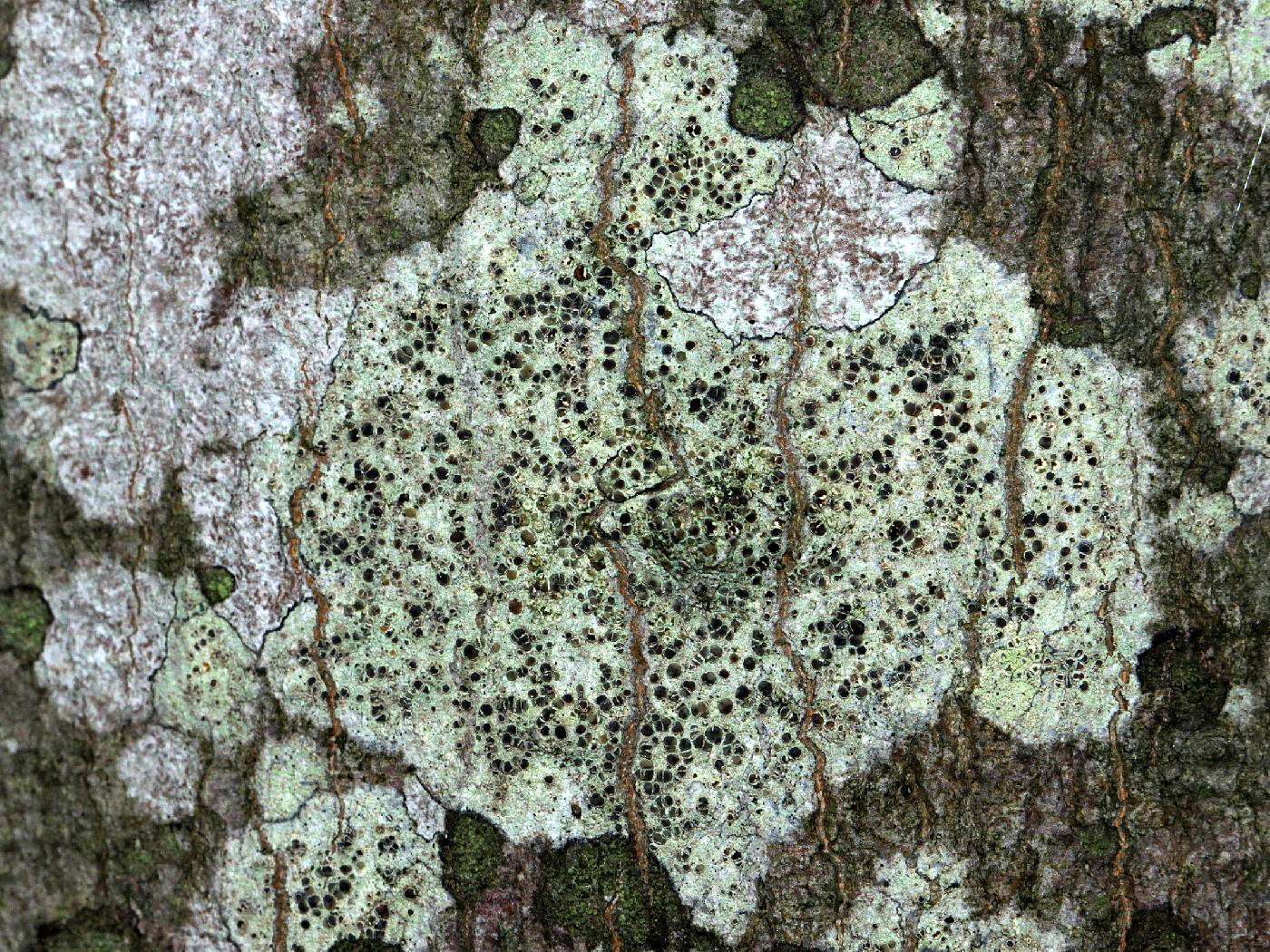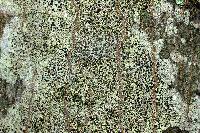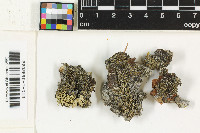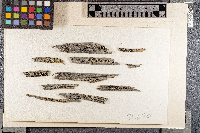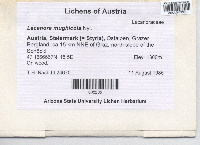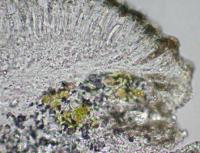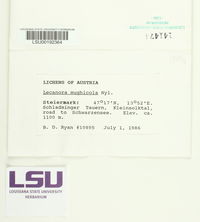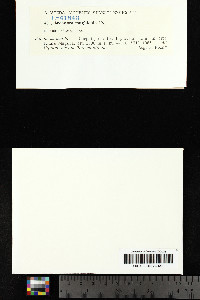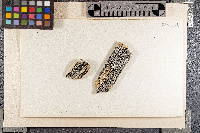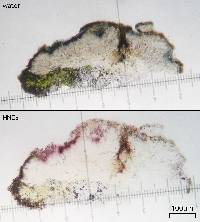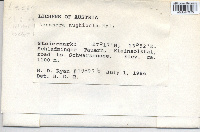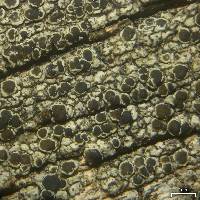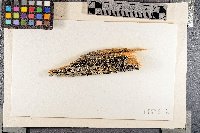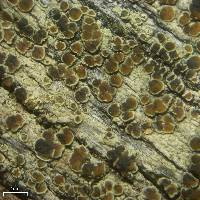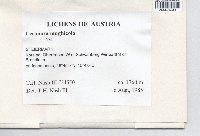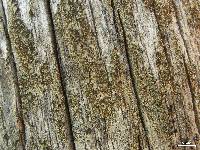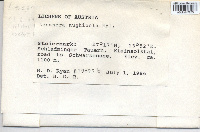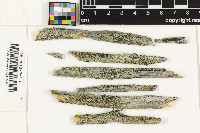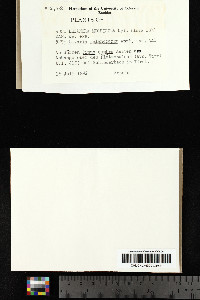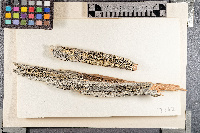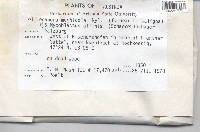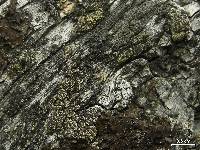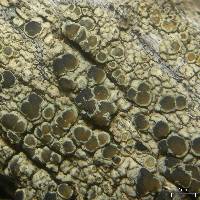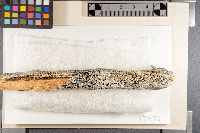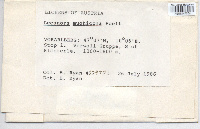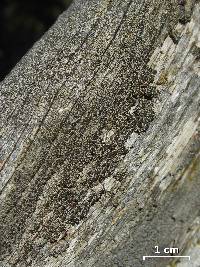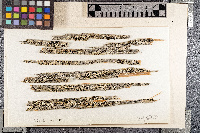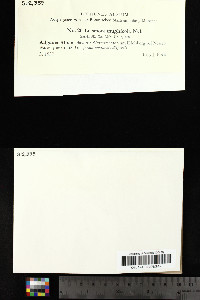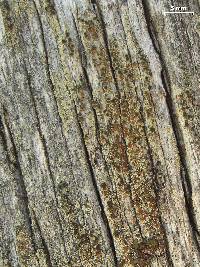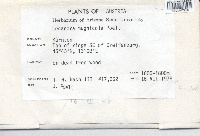
Consortium of Lichen Herbaria
- building a Global Consortium of Bryophytes and Lichens as keystones of cryptobiotic communities -
- Home
- Search
- Images
- Species Checklists
- US States: O-Z >
- US National Parks
- Central America
- South America
- US National Parks
- Southern Subpolar Region
|
|
|
|
Family: Lecanoraceae
|
Nash, T.H., Ryan, B.D., Gries, C., Bungartz, F., (eds.) 2004. Lichen Flora of the Greater Sonoran Desert Region. Vol 2. Thallus: crustose, rimose or warted-areolate areoles: rectangular to +irregular in outline, 0.25-0.55(-1) mm in diam., flat to moderately or rarely strongly convex, ecorticate but sometimes with a loose unorganised alga-free layer of various hyphae surface: yellowish beige to ochre, sometimes with a green tinge, dull or more often slightly glossy, esorediate Apothecia: rounded to mostly irregular or flexuose in outline, rarely single, mostly densely crowded, appressed or sessile with a broad or weakly constricted base, 0.35-0.65(-1) mm in diam. disc: orange-brown to dark brown, often with dark grayish or bluish discoloration or nearly black, flat to weakly convex, dull or rarely slightly glossy, finely white to bluish gray pruinose margin: somewhat prominent on young apothecia, persistent, slightly crenulate, mostly slightly glossy, without a parathecial ring amphithecium: present, with an algal layer, often with small brownish granules (soluble in K) especially in the medulla, laterally 35-125 µm, basally (55-)110-165 µm wide, with a medulla composed of irregularly entangled, short-celled hyphae with lumina 1-2 µm wide, corticate; cortex: with strongly gelatinized hyphae with lumina (1-)1.5-3 µm wide, 10-40 µm wide above, (10-)35-60 µm near base parathecium: hyaline, 15-40 µm wide epihymenium: sordid ochre to blackish brown with a turquoise tinge, with black apical cells of the paraphyses and brown granules (soluble in K), 10-15 µm thick hymenium: hyaline to yellowish brown, (35-)45-55 µm high; paraphyses: simple or weakly branched and anastomosing, with basally 1-1.5 µm wide and apically 1.2-2 µm wide lumina; subhymenium: hyaline, 25-80 µm thick; hypothecium: hyaline or faintly brown, (5-)45-100 µm thick asci: clavate, 8-spored ascospores: hyaline, simple or rarely 1-septate, narrowly ellipsoid, (7-)8.5-11.9(-14) x (3-)3.5-4.6(-5.5) µm Pycnidia: hyaline, immersed, irregularly chambered conidia: fusiform to bacilliform, 4-5.5 x 1-1.5 µm Spot tests: thallus K-, C-, KC-, P- Secondary metabolite: isousnic acid. Substrate and ecology: on wood in spruce-fir forest World distribution: North America and Europe Sonoran distribution: Arizona above 2600 m. Notes: Lecanora mughicola can be distinguished from L. saligna by its well developed, often somewhat glossy thallus, color of the apothecia, and the slightly glossy apothecial margin, which is usually more or less level with the disc. For the Sonoran region, it was initially recognized by |
|
|
|
Powered by Symbiota

